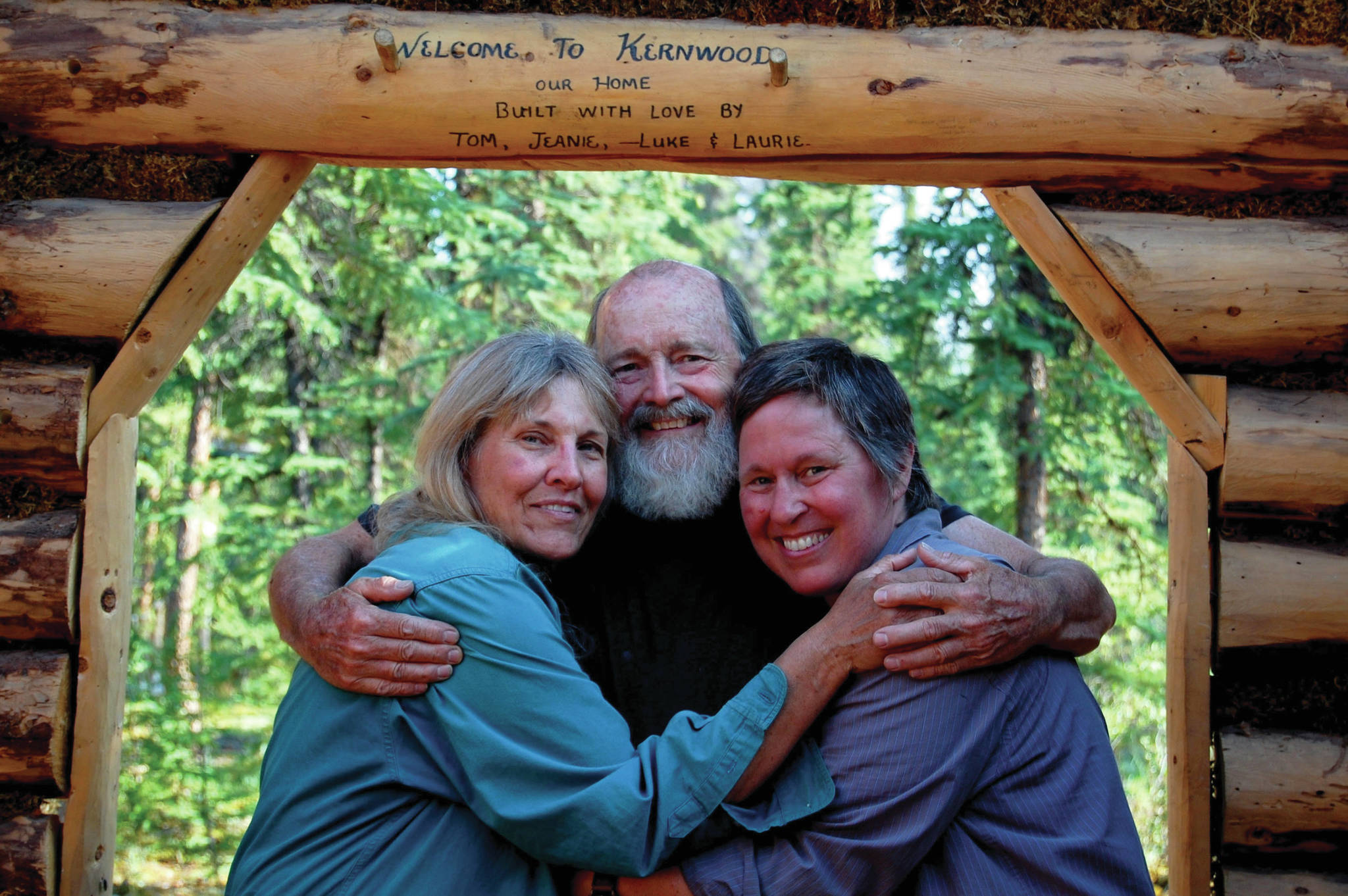A documentary film series that started in the 1992 with the building of a family’s wilderness retreat on the Chandalar River in the Brooks Range closes out with the poignant deconstruction of that home.
“ReWilding Kernwood,” a film by Jean Aspen and Tom Irons, has its Alaska premiere tonight at 7 p.m. at the Homer Theatre. Admission is $10 and benefits public radio station KBBI and the Homer Public Library.
Aspen and Irons started their trilogy with “Arctic Son: Fulfilling the Dream,” filmed starting in 1992 when Aspen, Irons, their son Luke, and friend Laurie Schacht went to the Chandalar River to spend a winter in the remote Alaska wilderness and build their cabin and outbuildings, Kernwood. With help from Homer filmmaker Brian George Smith, they finished it in 2010. “Arctic Daughter: A Lifetime of Wilderness,” continues the family’s story, with a focus on Aspen and her own years in remote Alaska.
“ReWilding Kernwood” shows how after their son’s unexpected death at age 25 in 2012, Aspen and Irons chose to dismantle their cabin and outbuildings log-by-log and restore the land to its natural setting after their gentle use of it over the years. Irons returned last week from Golden, Colorado, where he presented the film at the Colorado Environmental Film Festival for its first world showing.
“It’s not technically perfect or something that was filmed with an entire crew, but I think that’s the charm of it,” Aspen said in an interview Tuesday. “It’s a deep story of also loss and legacy and how you recreate yourself at moments of change.”
The daughter of Arctic adventurers Constance and Harmon “Bud” Helmericks, Aspen spent her childhood years living in remote Alaska. The Helmericks individually and together wrote a bookshelf of Alaskana, including “We Live in Alaska” and Constance Helmericks’ “Down the Wild River North.” Aspen also has written memoirs about her Alaska life, including “Arctic Daughter,” first published in 1988, and her most recent book, “Trusting the River,” published in 2016.
Kernwood had become not just the setting of books and films, but a place of sanctuary. After their son died, they returned to the Chandalar River to keep filming and redo “Arctic Son.”
“And then when we finished that, I think it was my impulse, we need a bridge to some kind of future,” Aspen said. “Who are we now?”
Recognizing that they were growing old and a time would come when it would be hard to return to Kernwood, Aspen and Irons considered what they should do with it. They thought of giving it to an environmental organization for use as a nature center, but it was too remote and expensive to use. If they just left it, commercial hunting guides would take it over.
“Why don’t we just take it down and make another movie about it?” Aspen said they decided.
From the summers of 2016 to 2018, the couple and friends, including Schact, deliberately took Kernwood apart. In her last winter there, Aspen stayed in the last building, a 7-foot by 12-foot cabin, watching spring arrive. They had built Kernwood from standing dead or fallen trees, and after taking the cabins apart, buried the logs in the thin soil using sod from the roof and moss from the kinking. Every bit of metal or plastic they brought back to civilization.
“It was a very careful dismantling,” Aspen said. “… It was a meditative process. … It was a saying good-bye.”
Irons said that documentary film making differs from story making in that there is no script. They have to film as many possible shots as might be needed, not knowing what the final cut requires. For a project that involved unbuilding homes, filming sometimes disrupted the flow of work, Irons said.
“I couldn’t just get up and start a day’s worth of work and do it,” he said. “I stop and get the shots. … It was just a heck of a lot of challenge for all three movies.”
Smith helped them on the first two films, and for “ReWilding,” artist Silas Firth did the editing. Musician and composer Lindianne Sarno wrote the score for “Arctic Daughter” and “ReWilding.”
“We’re really pleased to work with other Homer artists in the creation of this,” Irons said.
He said that while the three films connect, each stands alone.
“You don’t have to see them in any order,” Irons said. “… They are very self-supportive.”
Aspen said “ReWilding Kernwood” has a message beyond the family’s story.
“Our returning the land was an act of love and release,” she said. “… I think one of the concepts we’d like to get across is the possibility … Maybe building less would make us happier. Maybe having more wild spaces and less concrete parking lots would be an improvement.”
For a trailer of the film, visit https://vimeo.com/382530979. For more information on Aspen’s books and the other films, visit https://www.jeanaspen.com/.
Reach Michael Armstrong at marmstrong@homernews.com.


